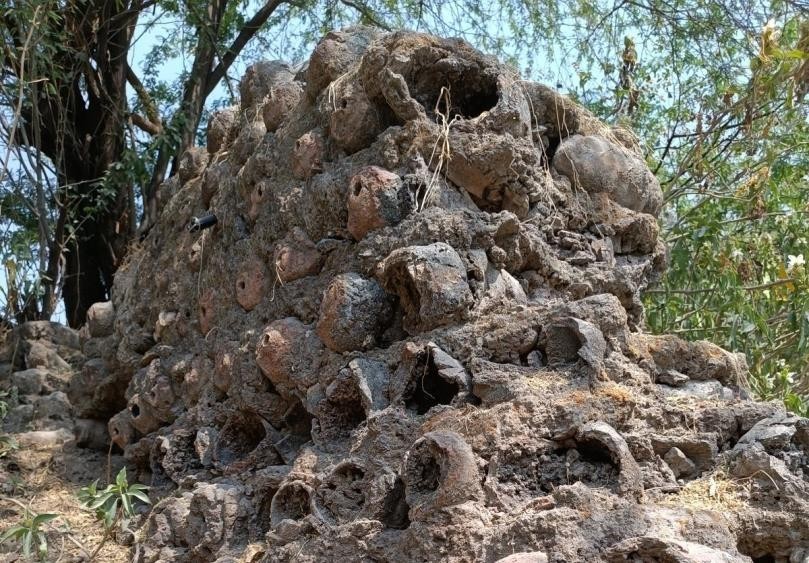Description

Disclaimer: Copyright infringement not intended.
Context: With 40 UNESCO World Heritage Sites, India's cultural sites are recognized globally. Many of these celebrate the human history, but what about landscapes?
Details:
Significance of the landscapes:
- Landscapes in the Indian subcontinent record many geological events, from the evolution of life to mass extinction cycles preserved in the fossil record.
- These events include meteorite collisions, volcanic eruptions that formed the Deccan Traps, continental collisions that formed the Himalayas, Lakshadweep coral atolls, creating fertile rivers and river valleys, giant deltas, and the largest mangrove forests.
- They form the rise and fall of civilizations and empires; affect the organization of wealth and political power in modern society.
.jpeg)
What is geoheritage?
- Geodiversity refers to the variety of rocks, sediments, minerals and natural processes that make up our landscape, geoheritage provides insight into the evolution of the earth and can be used for research, exploration and awareness.
- The Geological Survey of India has recognized several geo-heritage sites within the country, but there are many more that deserve recognition.
Steps undertaken to draw attention:
- The Society of Earth Scientists (SES), a group of independent researchers bridging the gap between earth science and society, is organizing a national program on International Geoscience Day in October 2022, followed by three workshops to explore potential sites in India.
- The first seminar was on dinosaur fossils in Bagh, Madhya Pradesh, and the second was on prehistoric life and tectonic features in the Kachchh region of Gujarat.
- For the third workshop, representatives gathered to explore the fossil park in Jhamarkotra and metallurgical fossil in Zawar.
Jhamarkotra:
- This is a stromatolite fossil park: dating back 1.8 billion years, it contains stromatolites of various textures and sizes.
- Stromatolites are layered sedimentary rocks formed by microorganisms.
- As such, stromatolite fossils preserve records of cyanobacteria, commonly known as blue-green algae—the earliest life on the planet.
- This organism has developed the ability to photosynthesize and produce its own food. In doing so, they released large amounts of oxygen into the early Earth's atmosphere, allowing most of the other planets to grow and develop.
- Stromatolites are sometimes called "crocodile skin rocks" because of their unusual texture.
- Cyanobacteria live in deep water; the search for sunlight causes the sediment to be trapped and deposited as a lens layer for photosynthesis.
- It allowed the stromatolite colony produced to expand and develop almost like a microbial coral.
- Jhamarkotra sediments are rich in phosphates because the trapped sediments are mainly phosphate minerals.
- Phosphate is mined to be used as agricultural fertilizer. But unregulated mining could damage or destroy this record of our geological past.

Zawar:
- Udaipur: Zawar is the oldest zinc smelter in the world.
- It has archaeological and metallurgical importance.
- Before the advent of high pressure technology, extracting zinc was a difficult task.
- Zinc has a low boiling and melting point, so it forms steam when heated and easily oxidizes on contact with the atmosphere.
- However, Zawar extracted zinc through a distillation process that required the use of a retort and an external condenser.
- Therefore, the metallurgical process used to obtain zinc in all metal extraction methods shows the height of metallurgy. The process of melting Zawar zinc has been going on for 2,000 years.
Protection:
- Apart from its World Heritage list, UNESCO also has criteria for ‘Global Geoparks’: sites with geological heritage of international value.
- Both Jhamarkotra and Zawar may qualify if they meet a few other conditions as well.
|
PRACTICE QUESTION
Q) Which of the following statements is/are correct with reference to Geoheritage sites?
a. Jhamarkotra is a stromatolite fossil park.
b. Zawar is the oldest zinc smelter in the world.
- Only a
- Only b
- Both a and b
- Neither a nor b
Answer: Option 3
|

https://www.thehindu.com/sci-tech/science/india-geoheritage-sites-jhamarkotra-and-zawar-protection/article66630686.ece












